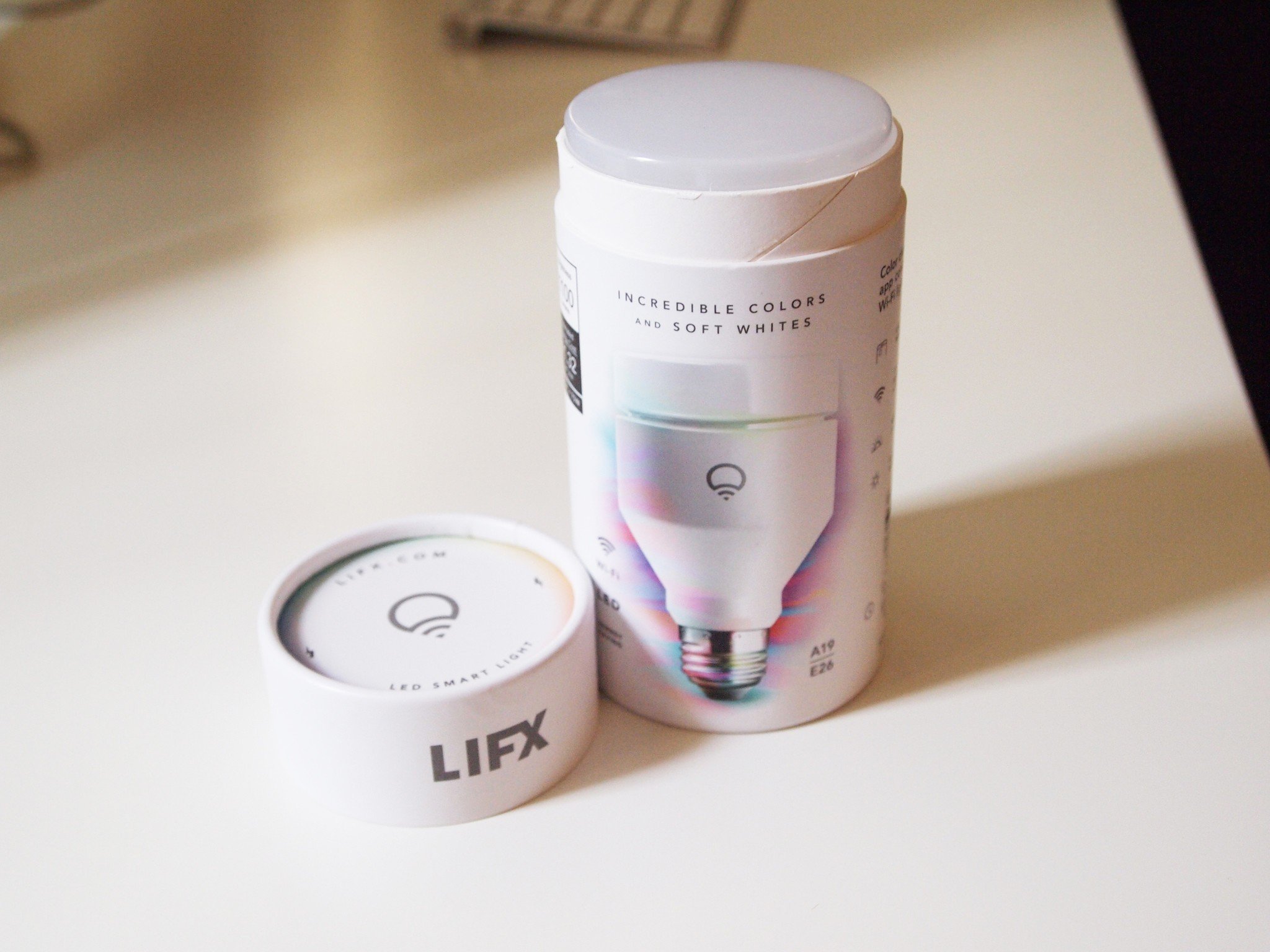The LIFX bulb is actually my first foray into home automation. I have very little experience with smart home products, but after using the LIFX A19 I can definitely confirm that if you're looking to begin using HomeKit but aren't sure where to start, smart bulbs are one of the least expensive and most magical items you can get. Seeing a light cycle through a rainbow of color with a touch of your finger is the definition of instant gratification — it's insanely easy, and insanely happy-making.
This bulb is part of LIFX's pretty vast collection of smart lighting tech. If you're the kind of person who's really into flexible lighting solutions that can be both practical and playful, LIFX's lights are probably for you. These lights are dimmable, vibrantly colorful, and offer a crazy wide array of possibilities.
Unboxing and design
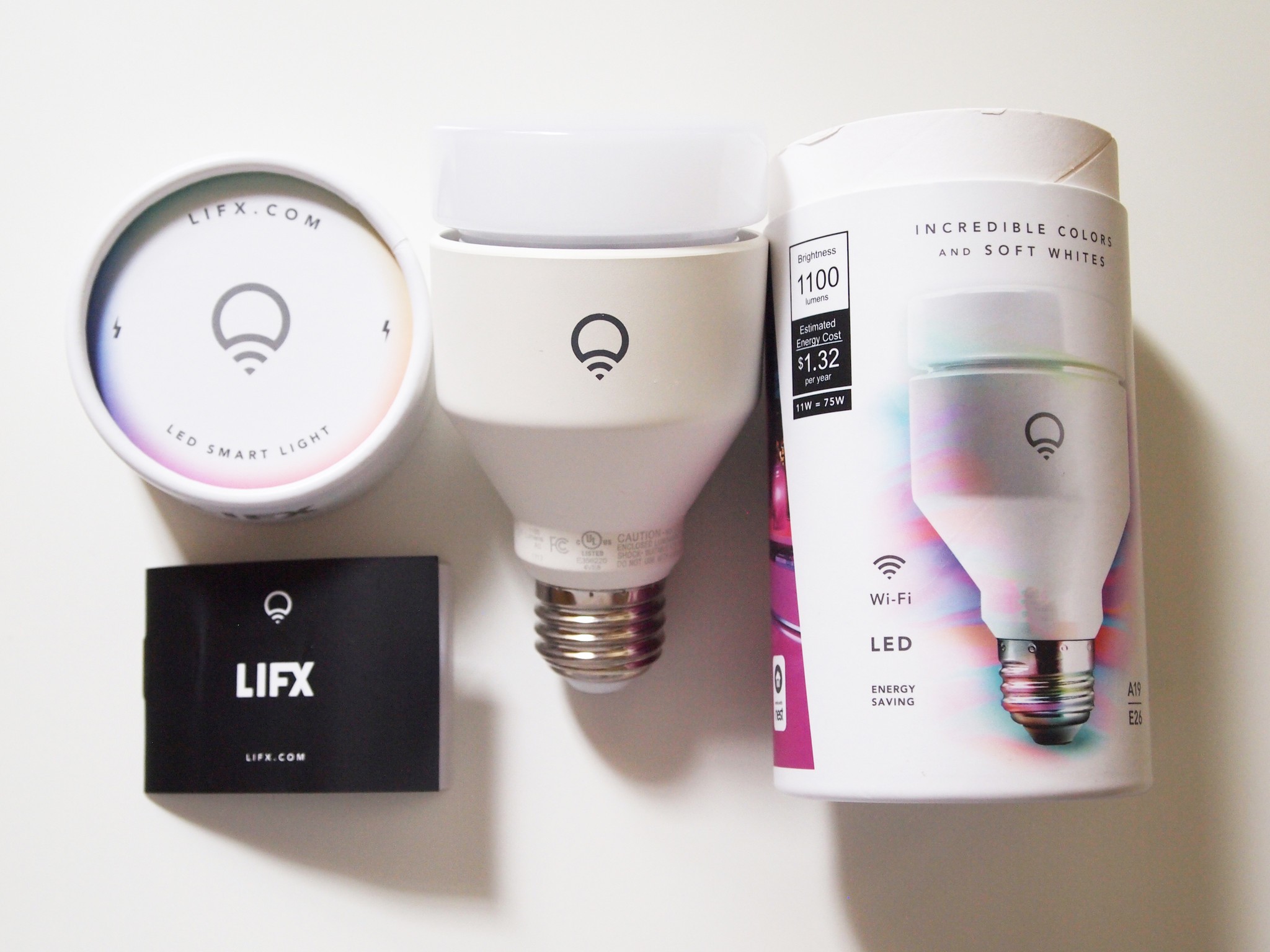
If you're like me, packaging plays a larger-than-it-should role in what products you choose. LIFX seems serious about aesthetics, so the LIFX A19 bulb comes in a really cool cylindrical box that has a soft matte finish and great graphics on the outside. The design of the bulb itself is also very minimalist and sleek — it has a pearl white finish and is quite geometric, which sets it apart from other smart bulbs like the Philips Hue. It's also much larger at the bulb end than a conventional lightbulb.
Another thing I noticed upon opening the box was that there were no extra parts. LIFX bulbs come with Wi-Fi built directly into them, so as long as you have Wi-Fi the company promises that installation is as easy as screwing the bulb into your light fixture of choice and downloading the app. This is another feature that, depending on your needs, puts it slightly above other smart bulbs: it doesn't need a hub that you plug into your router (looking at you again, Philips Hue) or any extra cords to mess with. I was extremely grateful for this, because as a beginner, fiddling with a plethora of extra parts and pieces can be a bit intimidating and exhausting.
Specs
For the detail-oriented among you, here are the specs for the LIFX A19:
| Category | Features |
|---|---|
| Weight | 7.8 oz |
| Dimensions | 2.5x2.5x4.5 |
| Bulb Type | LED |
| Brightness | 1100 lumens |
| Color Temperature | 2500K to 9000K |
| Color Range | 16 million colors |
| Lifespan | Approx. 22.8 years |
| Wattage Use | 13 watts at full brightness |
| Energy Rating | A+ |
| Voltage Range | Universal compatibility, AC 100-240V 50/60 Hz |
Installation and compatibility
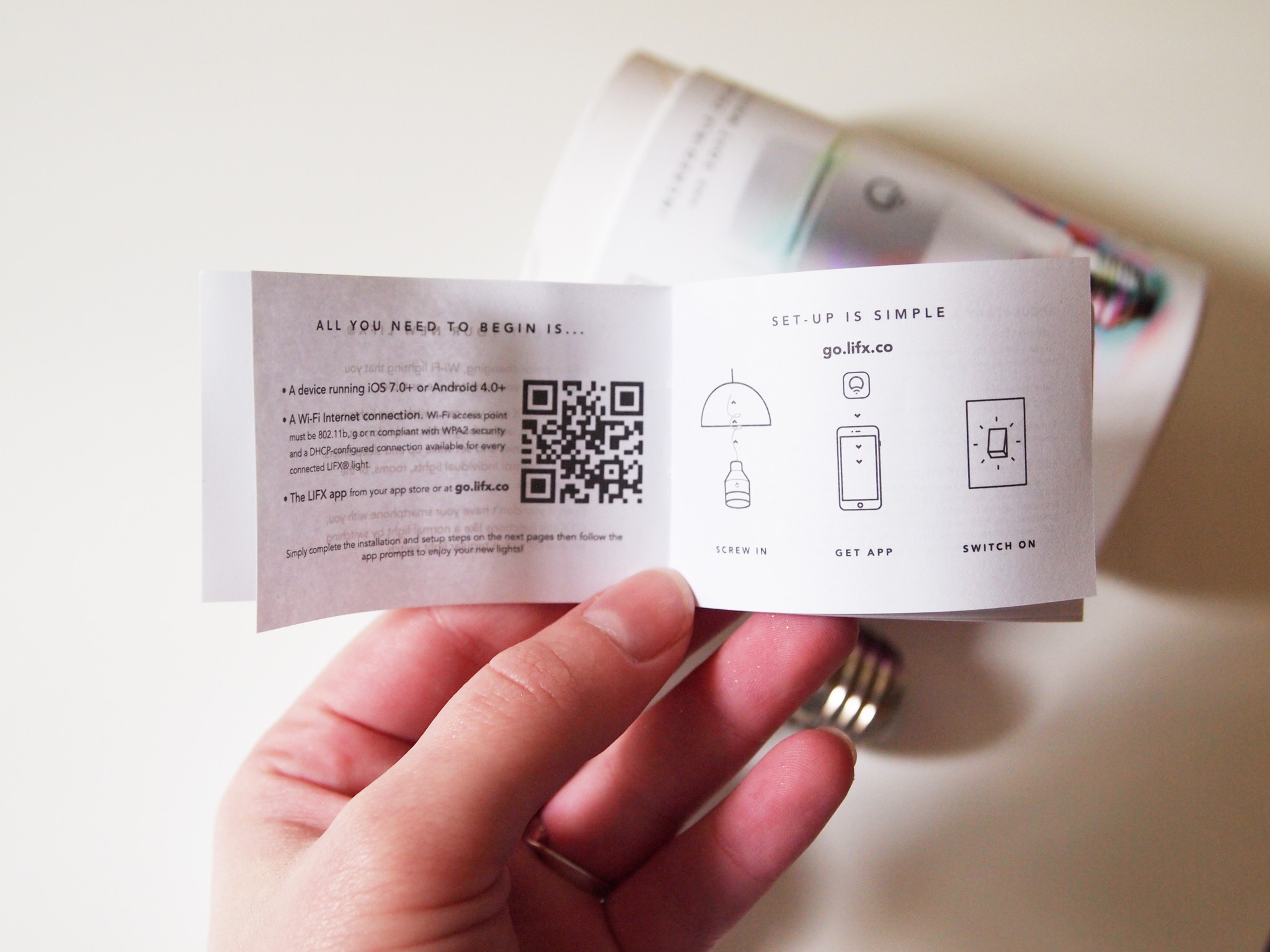
My only issue with this product is that I did have a bit more difficulty installing it than the packaging suggested. When I first attempted to set it up, I tried it in my IKEA metal work lamp. I found that it turned on just fine when I used my lamp's switch, but when I attempted to connect it to my phone via the LIFX app, I ran into trouble. After multiple attempts with no success, I decided to try it in my run-of-the-mill table lamp. Again, no luck. I eventually sought help from a LIFX support page regarding installation. Through that I learned that surrounding your LIFX lamp with metal is a no-no, as is having it within 25 feet of a microwave oven. Given that I live in a tiny studio apartment with only three lamps, accomplishing that was a bit of a pain. However, I did try it in my only remaining lamp — a standing lamp with a glass shade — and was finally victorious.
The LIFX app really does make setup incredibly easy. Once you've gotten your LIFX bulb into your lamp and switched it on, the app guides you through the process step-by-step. If you're used to using a smartphone, you'll definitely be able to set up your new lighting with no problem. LIFX bulbs are compatible with both iOS and Android phones, and will also connect with Google Assistant, Amazon Alexa, Nest products, IFTTT apps, Logitech's Pop and Harmony, and Samsung's SmartThings hub.
If you want to add your new LIFX light through the Home app directly, find the HomeKit setup code on the back of the LIFX manual and then follow our instructions in this article here. However, if you'd like to connect to HomeKit via the LIFX app, here's what you'll need to do:
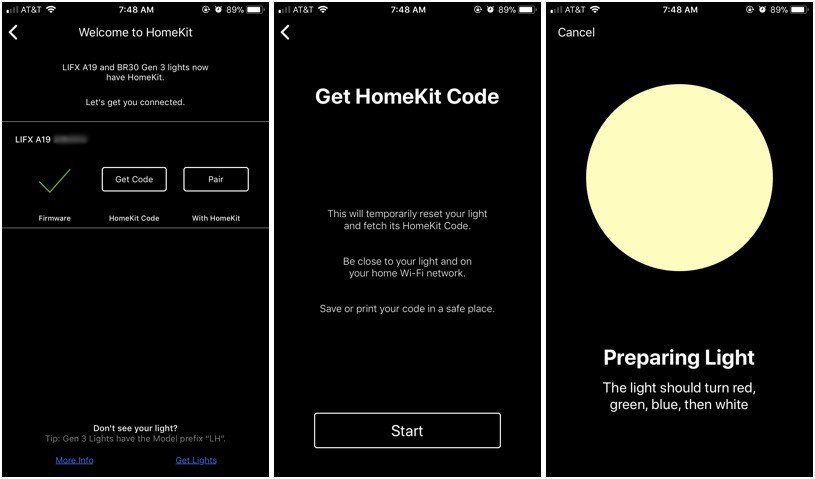
- Open up HomeKit settings within the LIFX app by touching the little gear icon in the top left corner.
- Once there, you'll see a three-step "Welcome to HomeKit" process. The first step — Firmware — will likely already have a green checkmark over it because as far as I could tell, that was updated automatically when I initially set up the bulb in the LIFX app.
- Tap "Get Code."
- A screen will open that says "Get HomeKit Code." Tap "Start."
- The LIFX app will then prepare your light for HomeKit connection. Your light should flash a few different colors while this is occurring.
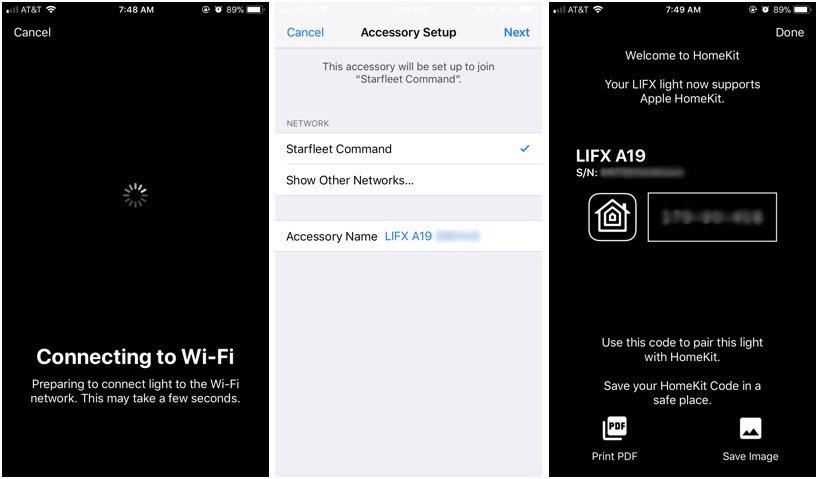
- Next you'll see a screen that says "Connect to Wi-Fi" as the LIFX app connects the light to your network.
- This will open an Accessory Setup screen within your iPhone's settings. Make sure the correct Wi-Fi network is selected, then tap "Next." (And don't make fun of my Wi-Fi network name.)
- After a Wi-Fi connection is secured, you will be taken automatically into the LIFX app once again. You'll see a code displayed, and it will be the same code that's printed on the back of the mini instruction manual included in the LIFX bulb's box. You don't have to do anything with this code right now unless you want to write it down, but you will need to grab your mini instruction manual for the next step. Tap "Done."
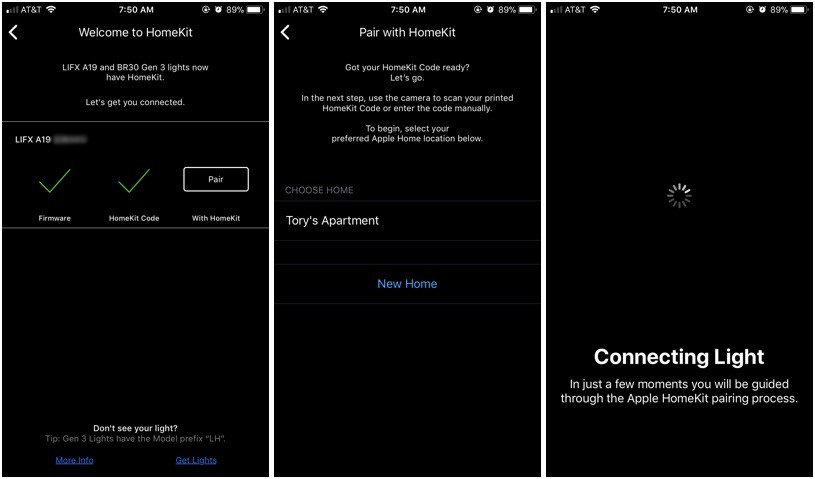
- You'll now see that there's a green checkmark above "HomeKit Code." Now tap the final step, "Pair."
- On this next screen, choose the home you wish to pair the bulb to. Unless you have multiple homes, which I do not, yours should be the only one on the screen. Tap it.
- The app will take a moment to prepare for the pairing process.
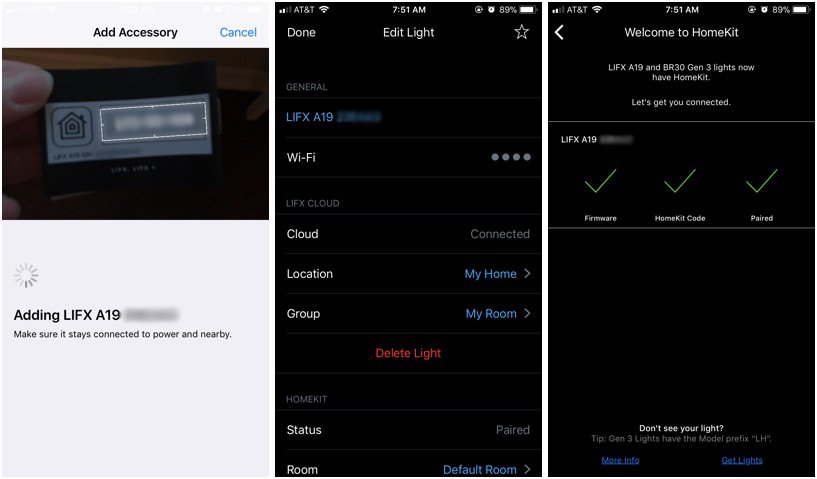
- Now a scanning screen will pop up and prompt you to scan your code. Take your mini instruction manual, flip it over to the back side so the code is visible, and hold it up to your phone's camera. The LIFX app will recognize and scan the code. Make sure you stay near to your light during this process.
- That's it! A screen will pop up with your light's info. All you have to do is tap "Done" in the upper left corner to save your settings and complete the process.
Using the Home app for controlling the light makes sense if you have other smart home products already and want to add it to a group action (for instance, having it turn on along with your door unlocking when you arrive home). However, you don't get any of the really cool options within the Home app — all you can do with the light individually is change the color and adjust the brightness. If you want to get the complete use out of your new bulb and access any of the fun effects/have more control over your color choices, you have to do that within the LIFX app.
Use
Now comes the real fun: playing with your light. The LIFX app's interface is really easy to use, and because I don't have any other smart home devices, this is my preferred way of controlling the bulb. When you open the app, there is a home page that lists all your LIFX lights. When you tap one, it takes you all the good stuff: a color selector dial (with, and I can't emphasize this enough, 16 million colors), a whites selector dial, a "Themes" page (where you can select color cycles based on themes such as "Soothing" and "Intense"), and an Effects page (which has cool lighting effects like "Spooky," "Strobe," and a Music Visualizer that syncs your light to music). Then you can go in and customize whatever effect you select by using sliders. You can also adjust the brightness of the light by swiping up or down in the center of either of the selector dials.
My favorite feature is the Music Visualizer. Remember the "Drive" thing I mentioned earlier? I'm not saying I did that, but … I did that. My second (and definitely more practical) favorite feature is being able to choose the warmth of the normal white lights using the selector wheel. Because I struggle with sensory processing, certain shades of white light make me physically ill. With conventional lightbulbs, it's really hard to get the exact shade of white that doesn't hurt my eyes, but with the LIFX bulb, I got a ton of options to choose from.
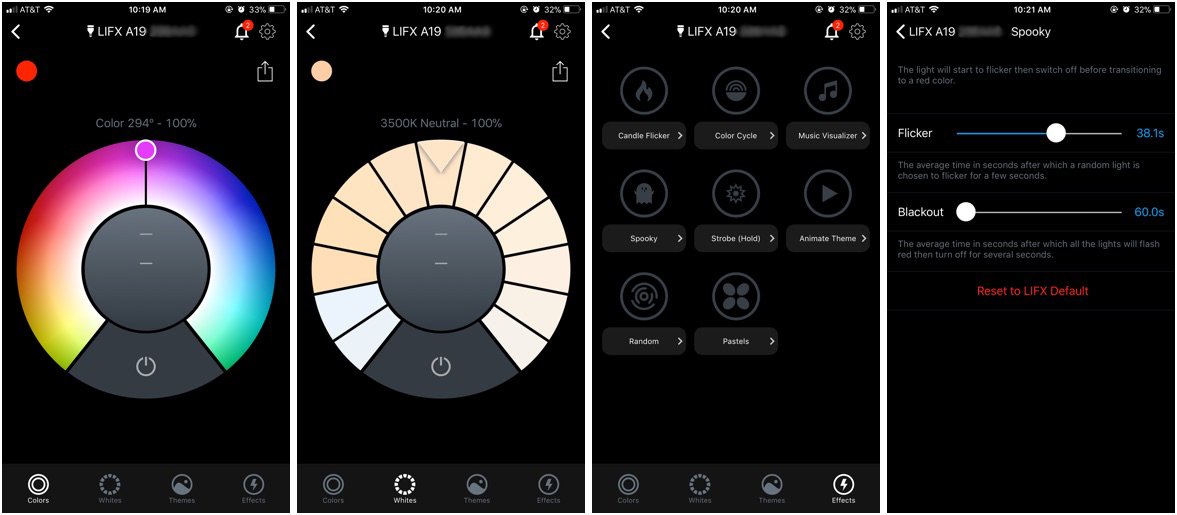
Another fantastic thing about LIFX bulbs is the intensity of the colors. It's a bit difficult to capture adequately on camera, but every single color is punchy and fantastic when set at the highest saturation. This is where having a small living space was a boon for me, because when the light was red, my entire apartment was completely bathed in red light. The blues and greens were just as vibrant as the warm colors, too, which can't be said for many other smart bulbs.

Should you buy it? Yes, if you're able
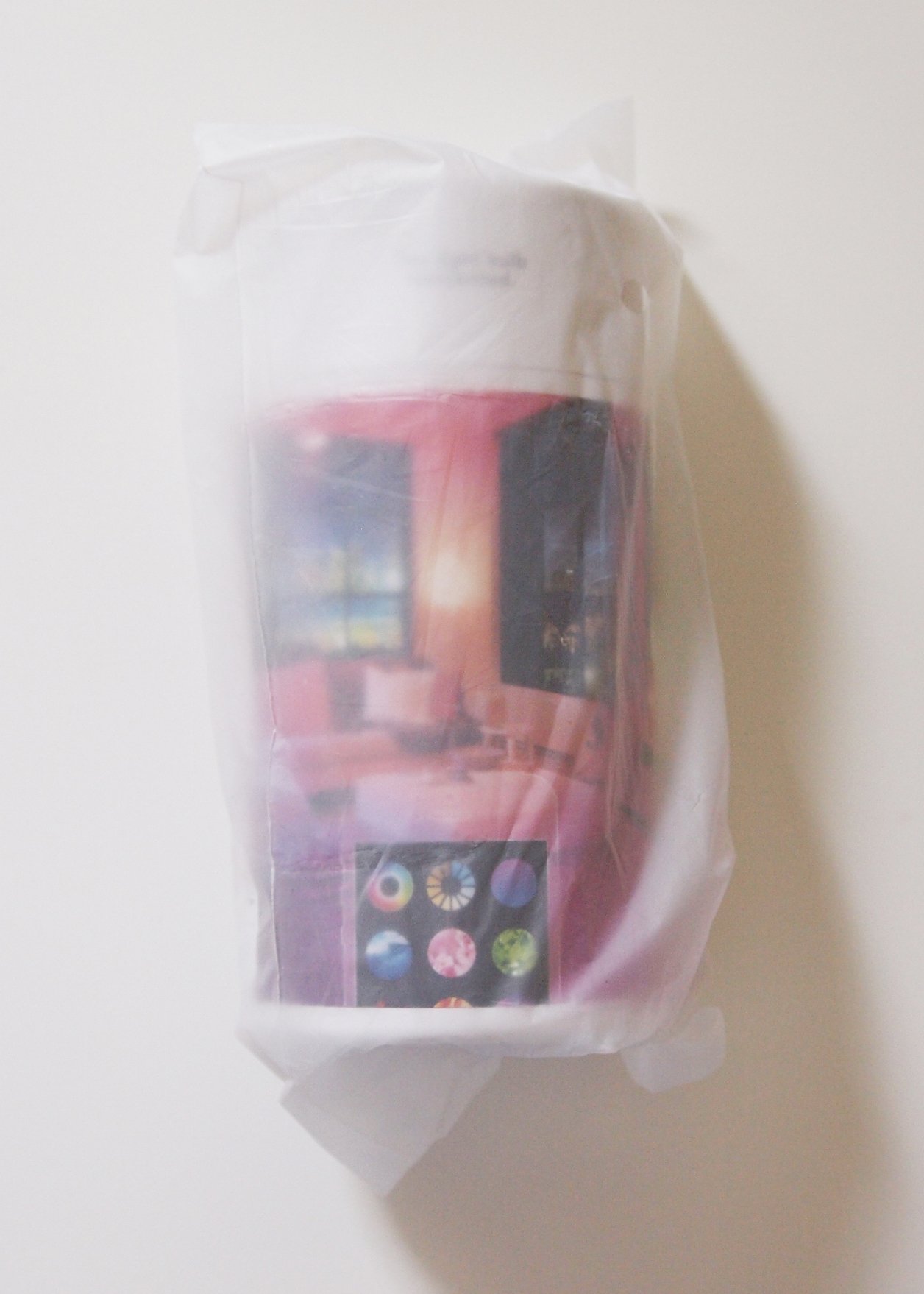
I was actually a bit skeptical about this at first. Not only am I inexperienced re: smart home tech, but I felt pretty well-covered in the fun and silly lights department: I keep both a lava lamp and a color-changing LED nightlight on my bedside table. That being said, I can't fully express how much childlike wonder and delight I experienced while testing this bulb. And even if magic and whimsy aren't your jam, the LIFX A19 is still a great purchase to make if you've got an expendable $60 burning a hole in your pocket and a smart phone. It serves as an everyday lamp, a multi-holiday decoration, a self-soother, and full party lighting. It also makes your home more comfy and accessible for people who are bothered by certain types of light, which is a courtesy that's difficult to come by.
Also, though, I think it's important for me to say that I realize I'm speaking from a place of privilege, and there are many things you could put $60 toward that you'd be better off prioritizing. However, if you can swing it, the LIFX A19 certainly has value in that it brings a great deal of joy to a space, which is okay too. It's good to do things that make you happy as much as you can in this otherwise unstable world, and LIFX's products fall soundly into the category of "really cool stuff that you don't necessarily need but is super gratifying to have." Additionally, if you're looking for a first step toward having a full-fledged smart home with HomeKit, LIFX HomeKit-enabled options are a great start, and probably the best bang for your buck as compared to other smart bulbs.
Tory Foulk is a writer at Mobile Nations. She lives at the intersection of technology and sorcery and enjoys radio, bees, and houses in small towns. When she isn't working on articles, you'll likely find her listening to her favorite podcasts in a carefully curated blanket nest. You can follow her on Twitter at @tsfoulk.
